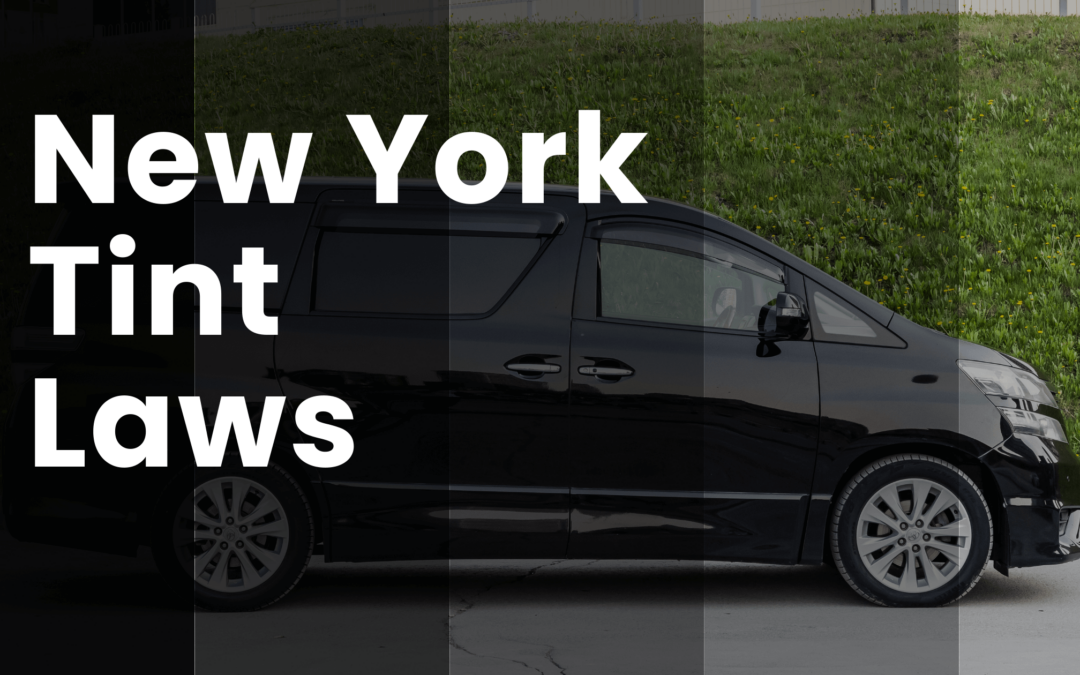New York Tint Laws
In 1991, New York established its initial window tinting laws, subsequently amending them in 2017. Understanding these regulations is paramount, so we present a detailed overview, shedding light on the intricacies to ensure compliance.
Disclaimer
While I have a background in commercial law and strive to provide accurate and informative content, it’s important to note that I am not a legal expert. The information presented in this blog is based on my interpretation of the subject matter, and laws can vary by location and change over time. It is strongly recommended that readers verify all sources of information and consult with legal professionals or relevant authorities before making any decisions related to tint laws.
Understanding the Terminology Regarding Tint Laws
The most important part of the legislation is understanding what VLT is and how law enforcement services check or test the percentage.
What is VLT
VLT, or Visible Light Transmission, is a measure of the amount of visible light that can pass through a window tint or film. It is commonly used to determine the darkness or opacity of window tints, and it’s an important factor in window tinting laws and regulations.
VLT is typically expressed as a percentage. For example, a window tint with a VLT of 20% allows only 20% of visible light to pass through, making it relatively dark and less transparent. Conversely, a window tint with a VLT of 70% allows 70% of visible light to pass through and is much lighter and more transparent.
How do Law Enforcement services test the VLT percentage?
Window tinting laws vary by jurisdiction, and they often specify the maximum allowable VLT for different types of windows on a vehicle, such as the front windshield, front side windows, rear side windows, and rear window. These laws are designed to ensure that drivers have adequate visibility and that law enforcement can see into vehicles for safety and identification purposes. The manner that they go about testing the VLT is by using a VLT gauge/meter.
Here is a YouTube Short from @TrafficServices and @TorontoPolice showcasing the device and how it works. Even though it is in Canada, it still is helpful to understand how the tint darkness is measured.
Window Tint Darkness in New York:
In New York, Visible Light Transmission (VLT) serves as the benchmark to measure the percentage of visible light allowed through your car windows. The requirements differ for sedans and SUVs/vans:
New York Car Tint Laws For Sedans:
- Windshield: Must allow more than 70% of light in, with the allowance of non-reflective tint on the top 6 inches.
- Front Side windows: Must permit more than 70% of light in.
- Back Side windows: More than 70% of light must pass through.
- Rear Window: Dual exterior rearview mirrors permit the use of any level of darkness.
Tint Law For SUVs and Vans in New York:
- Windshield: Same as sedans, with over 70% light allowance and non-reflective tint on the top 6 inches.
- Front Side windows: The requirement is more than 70% VLT.
- Back Side windows: SUVs and vans can employ any level of darkness on their back side windows.
- Rear Window: Similar to sedans, any level of darkness is permitted with dual exterior rearview mirrors.
| Type of Window | Sedans | SUVs/Vans |
|---|---|---|
| Windshield | More than 70% light transmission, non-reflective tint allowed on top 6 inches | More than 70% light transmission, non-reflective tint allowed on top 6 inches |
| Front Side Windows | More than 70% light transmission | More than 70% light transmission |
| Back Side Windows | More than 70% light transmission | Any level of darkness allowed |
| Rear Window | Any level of darkness allowed with dual exterior rearview mirrors | Any level of darkness allowed with dual exterior rearview mirrors |
Window Tint Reflection in New York:
Window tints can reduce glare and heat by reflecting incoming light. In New York, specific regulations exist regarding the permissible reflection levels:
For both sedans and SUVs/vans, New York law stipulates that front and back side windows should not have a mirrored or metallic appearance.
Additional New York Window Tint Rules and Regulations:
Beyond darkness and reflection levels, New York’s window tinting regulations include the following crucial provisions:
Side Mirrors
Dual side mirrors become mandatory if back side windows or the rear window’s VLT falls below 70%.
Restricted Colors
New York’s tint laws do not explicitly ban specific tint colors.
Certificates
Manufacturers are not required to certify the films they sell in the state, thus it’s advisable to confirm the film’s certification with your dealer.
Stickers
New York mandates the placement of a sticker to denote legal tinting, positioned between the film and glass on each tinted window.
Medical Exceptions
The state allows medical exemptions for special tints. Consult Form MV-80W for details.
Regulations for Out-of-State Drivers
The same regulations apply to out-of-state drivers as those for drivers living in the State.
If you are from States such as Vermont, Massachusetts, Pennsylvania, Connecticut, and New Jersey, you are expected to abide by these laws and regulations.
It’s important to note that interpretations of New York’s tinting laws and regulations may differ based on your county or place of residence. To ensure full compliance, we recommend verifying this information with your local DMV or law enforcement authorities.
Our information regarding New York’s window tint laws was most recently updated in 2023. We are dedicated to providing accurate and current information. If you discover any inaccuracies or outdated data, please don’t hesitate to contact us. Your trust in our resources is of utmost importance, and we are committed to delivering the most reliable information available.

